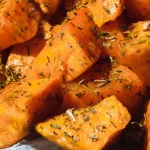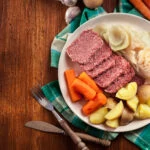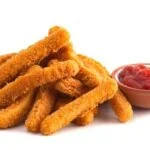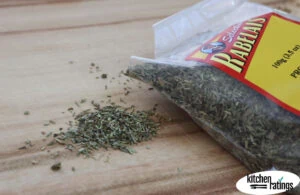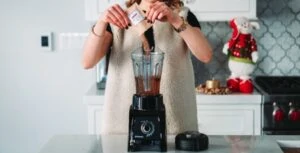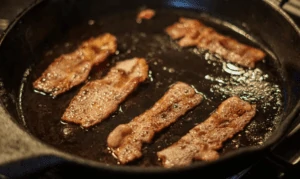A meat thermometer is a very useful tool when it comes to cooking. Whether you’re cooking for your family or having a dinner party with friends, it’s important to take the necessary safety precautions to provide a dish that is not only delicious but also one that has been prepared according to proper health guidelines.
When cooking chicken, pork chops, or fish filets, you must make sure they are cooked to the right temperature. So, here’s how to use a meat thermometer the right way, as well as how to calibrate your meat thermometer.
What Is a Meat Thermometer and When to Use it?
A meat thermometer is a device used to measure the internal temperature of meat or other foods. Some foods such as chicken and pork must reach a specific internal temperature to be safe to eat.
Bacteria in these types of meat can cause some diseases, so it is really important to cook them properly at the correct temperatures. By acquiring a correct measurement, you can cook your food well and prevent diseases caused by bacteria such as E.coli and salmonella.
Meat thermometers allow you to take an accurate measurement of the internal temperature of food without ruining the flavor and texture of the meat.
You can find different versions of meat thermometers on the market. There are analog and digital thermometers available for purchase. However, the most modern thermometers are wireless and can be set and operated from your cell phone through an app with Bluetooth connectivity.
How to Use a Meat Thermometer
A meat thermometer doesn’t have to be a difficult instrument to use. Simply follow the steps below to get the best use out of it.
- Choose the thermometer you need
- Insert the thermometer into the thickest part of the meat or food you want to monitor
- Monitor the temperature of the meat frequently during and before the end of the cooking time
- Read the thermometer
Choosing the Right Type of Thermometer
There are several types of meat thermometers on the market. In grocery stores, you can find everything from the most basic models to bimetallic and bulb models. They are the most classic and affordable versions you can buy but are often less accurate than the more modern thermometers available. They are also usually made of glass, which makes them fragile.
You can also find digital meat thermometers, which take an instantaneous reading of the food. These instruments are usually more accurate in measuring the temperature of the meat. Therefore, it is highly recommended to choose one of these new thermometers. Among the selection of digital thermometers available, you can choose:
Instant-Read Digital Thermometer
An instant-read thermometer is very easy to use as it will give you a quick and accurate reading.
Digital Probe Thermometer
This type of digital instant read thermometer is a little more elaborate. The included temperature probe inserted into the meat is connected to a separate monitor where the temperature can be read.
Probe thermometers are configurable, and an alarm can be set to smoke meat cuts that need more cooking time. These thermometers are regularly used for cooking turkey or beef ribs that need to be cooked slowly in the oven over a long time.
Insert the Thermometer Properly
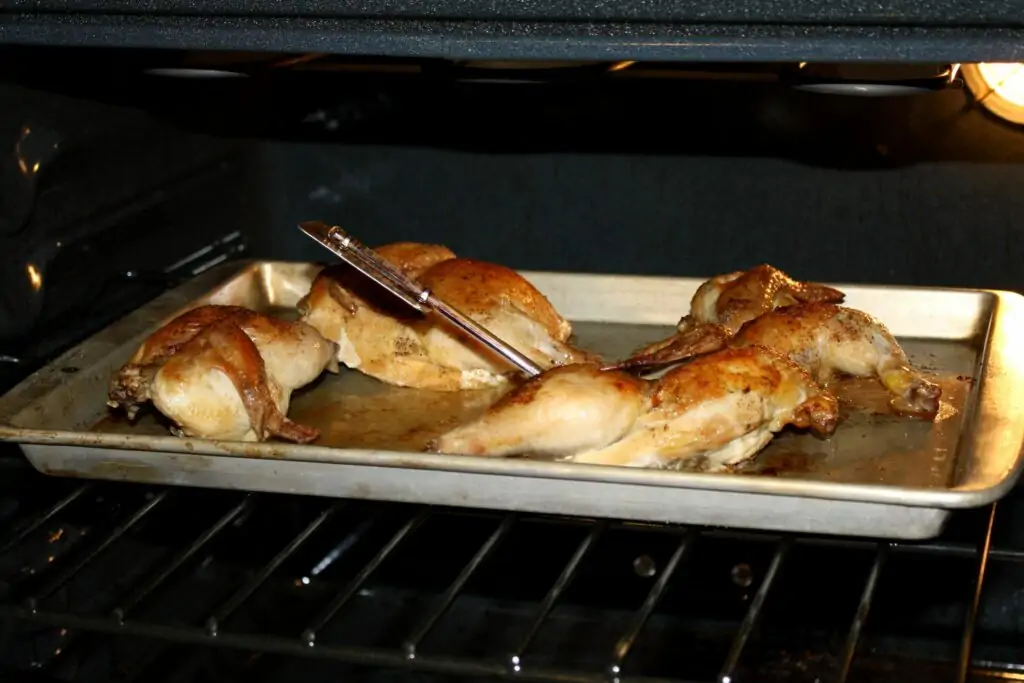
This step is very important because you may not get an accurate meat temperature reading if you don’t do it correctly. To do this, you must insert the thermometer into the thickest area of the meat. Avoid touching fat and bones to obtain the lowest internal temperature of the meat.
Usually, thermometers should be inserted ½ an inch into the meat. However, if the meat to be cooked is thicker, it should be inserted deeper.
Monitor the Temperature of the Meat Frequently During and Before the End of the Cooking Time
If it is a large roast, it is recommended that you check the meat 30 minutes before it is ready. For small cuts of meat, check the temperature of the meat 5 to 10 minutes before. The thermometer should indicate the meat temperature recommended in the recipe or a food safety chart.
Keep in mind that the meat continues to cook once you remove it from the heat. This is called “carry-over cooking.” For thick roasts such as beef or pork loin, removing them from the heat when it reaches 5 degrees below the desired cooking temperature is recommended.
Once you remove the meat from the heat, you should let it rest for 5 to 10 minutes, and the temperature will continue to rise until it reaches the correct cooking point. This will allow the meat juices to distribute throughout the meat and finish cooking without overcooking.
Read the Thermometer
Always remember to set the thermometer to the unit of your choice. Many food thermometer options can be set in degrees Fahrenheit or degrees Celsius, depending on your needs.
Remember to program the necessary alerts to give your meat accurate cooking times for the best results and ensure you reach a safe temperature.
How to Calibrate Your Meat Thermometer
To check if your food thermometer is measuring the temperature accurately, we recommend calibrating it every so often for optimal performance.
To do this, dip the tip of the thermometer in a container with ice water or ice. It should read 0ºC or 32 ºF, that is, the temperature at which water freezes. Some thermometers include a reset button to calibrate your thermometer if you do not get the proper temperature.
Once you do, your thermometer will be ready again to prepare delicious, perfectly cooked meat.
How to Know When Meat Is Well Cooked
One of the recommendations is to use the USDA food safety chart to guide you in cooking each type of meat to the proper temperature:
- Beef, pork, veal, and lamb: 145 ° F and let stand for at least 3 minutes
- Poultry such as breasts, wings, thighs, chicken, and turkey: 165 ° F
- For ground meat such as hamburgers: 160 ° F
- Cooked or smoked ham: 145 ° F and let stand for at least 3 minutes
- Fish and seafood: 145 ° F

